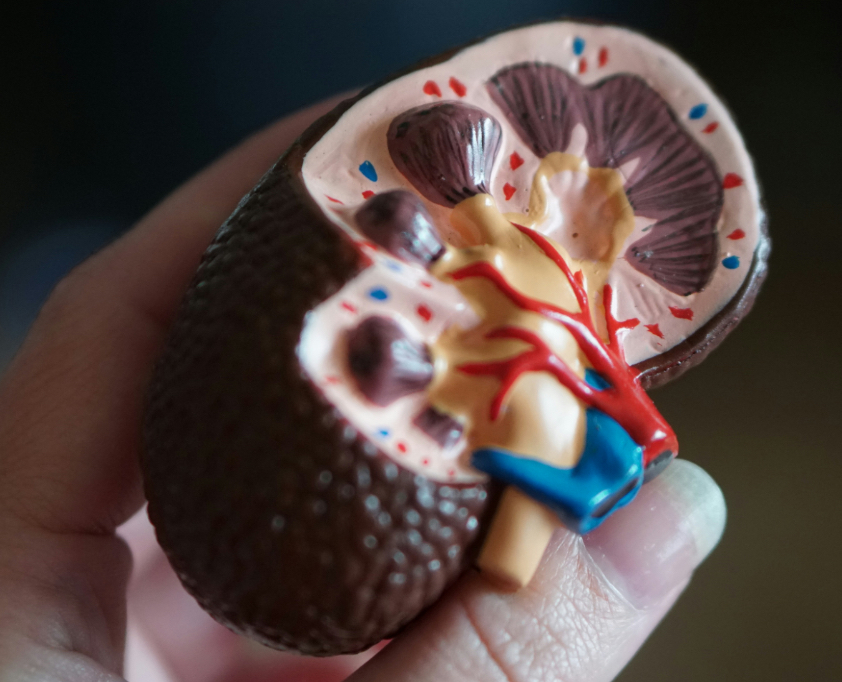Urinary Protein Discrepancy and Multiple Myeloma
In multiple myeloma (MM), a plasma cell malignancy, abnormal monoclonal proteins (M-proteins, typically immunoglobulin light chains or Bence Jones proteins) are produced and excreted in urine. This can lead to a urinary protein discrepancy—a mismatch between results from different methods of measuring urinary protein, such as a urinary dipstick and the urine total protein/creatinine (P/C) ratio. Understanding this discrepancy is critical for diagnosing and monitoring MM.
Why the Discrepancy Occurs
- Urinary Dipstick Limitations:
- The dipstick primarily detects albumin through a colorimetric reaction.
- It is insensitive to light chains (Bence Jones proteins), which are prevalent in MM. Thus, in MM, the dipstick may show trace or negative protein despite significant proteinuria.
- Urine Total Protein/Creatinine Ratio:
- This measures all proteins in urine (including albumin, globulins, and light chains) relative to creatinine, providing a more comprehensive assessment.
- In MM, the P/C ratio is often elevated due to high levels of Bence Jones proteins, even when the dipstick is negative.
- Pathophysiology in MM:
- Bence Jones proteins are filtered by glomeruli and excreted in urine, contributing to total proteinuria.
- These proteins may not be detected by dipstick, leading to the discrepancy.
- Over time, excessive light chains can cause renal damage (myeloma kidney), increasing proteinuria and complicating interpretation.
How to Calculate and Interpret
1. Urinary Dipstick
- Method: A dipstick is dipped into a urine sample, and the protein pad changes color based on albumin concentration.
- Scale: Results are reported as negative, trace, 1+ (30 mg/dL), 2+ (100 mg/dL), 3+ (300 mg/dL), or 4+ (>1000 mg/dL).
- Interpretation in MM:
- Negative or trace: Common in MM if proteinuria is predominantly light chains.
- Positive (1+ or higher): Suggests albuminuria, which may indicate coexisting glomerular damage (e.g., from amyloidosis or myeloma kidney).
- Limitations: False negatives in MM due to low sensitivity for light chains.
2. Urine Total Protein/Creatinine Ratio
- Method:
- Collect a spot urine sample (preferred for convenience over 24-hour collection).
- Measure total protein concentration (mg/L) and creatinine concentration (mg/dL) in the same sample.
- Calculate the P/C ratio:
This approximates protein excretion in mg protein/g creatinine.
- Normal Range:
- <150–200 mg/g (or <0.15–0.2 g/g) in healthy individuals.
- 200 mg/g indicates proteinuria; >3500 mg/g suggests nephrotic-range proteinuria.
- Interpretation in MM:
- Elevated P/C ratio with negative dipstick: Suggests light chain proteinuria, highly suspicious for MM.
- Elevated P/C ratio with positive dipstick: Indicates mixed proteinuria (light chains + albumin), possibly due to renal damage.
- Monitoring: The P/C ratio can track disease progression or response to therapy (e.g., chemotherapy reducing M-protein production).
3. Confirmatory Tests for MM
- Urine Protein Electrophoresis (UPEP): Identifies and quantifies M-proteins (light chains) in urine. A monoclonal spike confirms Bence Jones proteinuria.
- Immunofixation: Determines the type of light chain (kappa or lambda).
- Serum Free Light Chain (FLC) Assay: Measures kappa and lambda light chains in blood; an abnormal kappa/lambda ratio supports MM diagnosis.
- 24-Hour Urine Protein: Provides total protein excretion (mg/day) but is less practical than spot P/C ratio.
Clinical Example
- Case: A patient with suspected MM has a dipstick showing trace protein (albumin <30 mg/dL) but a urine P/C ratio of 2000 mg/g.
- Interpretation:
- The dipstick’s low reading suggests minimal albumin.
- The high P/C ratio indicates significant proteinuria, likely due to Bence Jones proteins.
- Next Steps: Order UPEP and immunofixation to confirm light chain proteinuria, and consider serum FLC assay, bone marrow biopsy, or imaging for MM diagnosis.
Practical Considerations
- False Positives/Negatives:
- Dipstick: False positives from hematuria, concentrated urine, or infection; false negatives in light chain proteinuria.
- P/C ratio: Affected by creatinine levels (e.g., low in muscle-wasted patients, high in muscular individuals).
- Renal Function: Assess eGFR, as renal impairment (common in MM) may alter protein excretion.
- Follow-Up: Persistent discrepancy warrants specialist referral (hematology/nephrology).
Summary
In multiple myeloma, a urinary protein discrepancy (negative/low dipstick with elevated P/C ratio) is a hallmark of light chain proteinuria. The dipstick detects albumin but misses Bence Jones proteins, while the P/C ratio captures total proteinuria, making it more reliable in MM. Confirmatory tests like UPEP and immunofixation are essential for diagnosis. Regular monitoring of the P/C ratio helps assess disease burden and treatment response.
Disclaimer: owerl is not a doctor; please consult one.


Leave a Reply